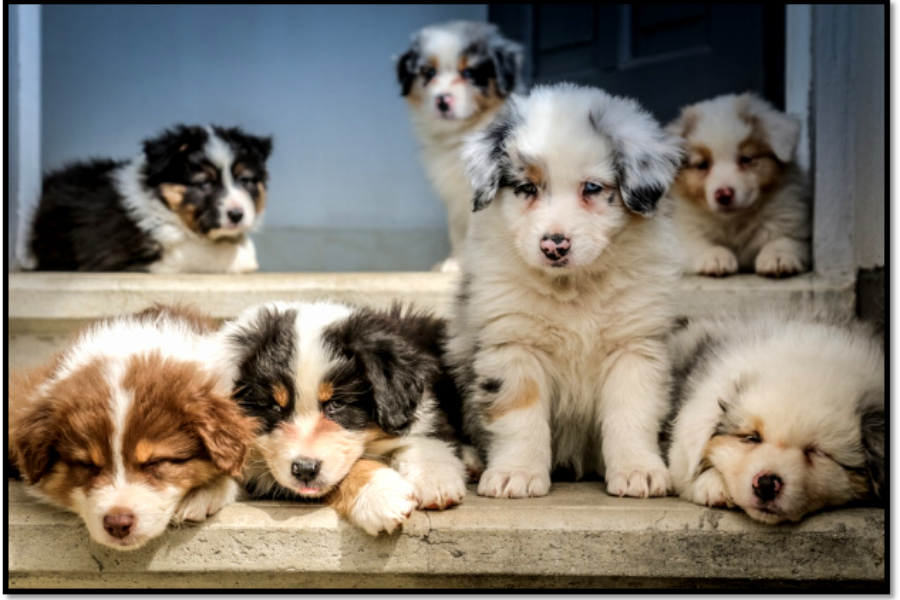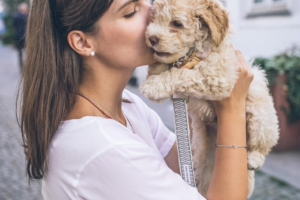Ever since you were a kid, you’ve dreamt of having a dog in your home.
You wanted a faithful companion who would love you and stay with you through thick and thin. Someone who would help you in your time of need, like when you want to get rid of that overcooked beef steak your mom just made.
Yes, for a long time, you felt like you were destined to be a proud dog owner. And finally, now that moment has come.
You’re getting your first ever dog. You’re thrilled. You’re excited. But you’re also a little nervous.
You’ll be adopting an actual pet, a living, breathing specimen of perfect evolutionary selection that will do nothing but love you for you. Ergo, you want them to have everything the world has to offer.
But as a newbie, how do you go by doing so?
As a well-renowned pet hotel in Suwanee, GA; Twissted Whiskers has the know-how you need, to take care of your pet the right way!
Use the guide below. Put it to good use and keep your pupper happy, healthy and satisfied.

Basics of Doggy Care
Choosing the Right Puppy
Did you know there are 339 breeds of dogs in the world?
Out of these breeds, those that suit first-timers are boxers, Yorkshire terriers, bichon frises, Labradors, Papillons, Pomeranians, poodles, cavalier King Charles Spaniels, golden retrievers, and some mixed breed dogs as well.
However, even with these choices, you’ll need to first determine which breed of dog would suit your lifestyle.
The above mentioned dogs are perfect if you stay at home. But if you have a full-time job, you’ll do well with a low-energy breed, such as a Maltese, Greyhound, Shar Pei, Whippet or a Basset Hound. They’ll require a bit more work than your average Labrador, but at least they won’t suffer from separation anxiety.
Puppy Proofing Your House
Crouch and see the world from your dog’s point of view. Are there breakable items, potential toxins, electric cords within reach? Dogs like exploring so having these around might prove to be dangerous for them.
Just like you would baby-proof your home, do the same for your dog. Use proper hardware and locks to keep drawers and cabinets closed (Note: they must be chew-proof). Also, install pet gates if you want to keep your pup away from certain rooms.
Get the Supplies
Some items which are essential to your pup’s well-being include:
- A leash
- Collar with emergency contact and identification
- Chew toys
- Water and food bowls
- Dog bed
- Safety harness for travels
Switch these items out as your dog grows. Word of advice; don’t go for the ridiculously expensive items. Make a budget and stick to it. Your dog doesn’t care if they have a rhinestone-encrusted collar.
Get a Vet
Preferably, it’s better to find a vet before you actually adopt your puppy. Once you bring them home, take them to the pet doctor for a general exam. Stay with them and make sure it’s a good experience; otherwise your dog will fear returning.
During the first six months, you’ll be going to the vet a lot since your pup will need their vaccines. Help them get used to the visits.

Also, have your pup spayed or neutered after about six months. This’ll keep them healthy and will allow them to live longer. (It’s a fact!) And don’t worry about your male dog feeling less of a male after being spayed. The experience is not emotionally or physically traumatic.
Attend to their Basic Needs
Aside from their nutritional and physical needs, take care of their social needs as well. Give them lots of cuddles and hugs; take them out to meet other dogs. Take them to the park and let them run free for a while.
When needed, take them to get groomed as well. Their hair; nails and teeth need attention so booking them some specialty treatments with a reliable pet service will do just the trick!
Keep an Eye Out for Signs of Illness
Pups are especially vulnerable during the first few months so knowing which symptoms to look out for now, will save you from taking them to the emergency room later:
- Lack of appetite
- Loss of fur
- Vomiting
- Poor weight gain
- Lethargy
- Painful abdomen (swelling)
- Diarrhea
- Pale gums
- Wheezing, coughing
- Difficulty breathing
- Nasal discharge
- Inability to pass stool or urine
- Eye discharge or red, swollen eyes

Teach Obedience
And be positive about it! No shouting, no getting frustrated and especially no intimidation! It will take some time for your pup to obey commands so it’s best to start at an early age i.e. when they’re 4-6 years old. They’ll learn basic commands like sit, stay, and come, down quite easily.
But they may need special attention, especially when they start acting out. Some dogs can have behavioral issues sometimes like destructive chewing or barking too much. For that, it’s best if you enroll them in a Special Care Program so a professional can attend to their needs.
Be a Responsible Dog Owner
Your dog is not a plaything. They are animals with desires and needs, although theirs are a lot simpler and easier to satisfy.
Be a responsible dog owner and pay attention to them. Don’t taunt or tease them. If you have children in the house, teach them that a dog is not to be roughly handled.
Dogs are very loyal to their owners but even they can have limits as to how much they can tolerate before they react.
Conclusion
Your doggo will love you, no matter what. So the least you can do is giving them the comfort, love and joy they truly deserve.
Pay attention to their needs. Keep them well-groomed and happy and don’t forget to treat them every now and then. Twissted Whiskers can help you with that!





